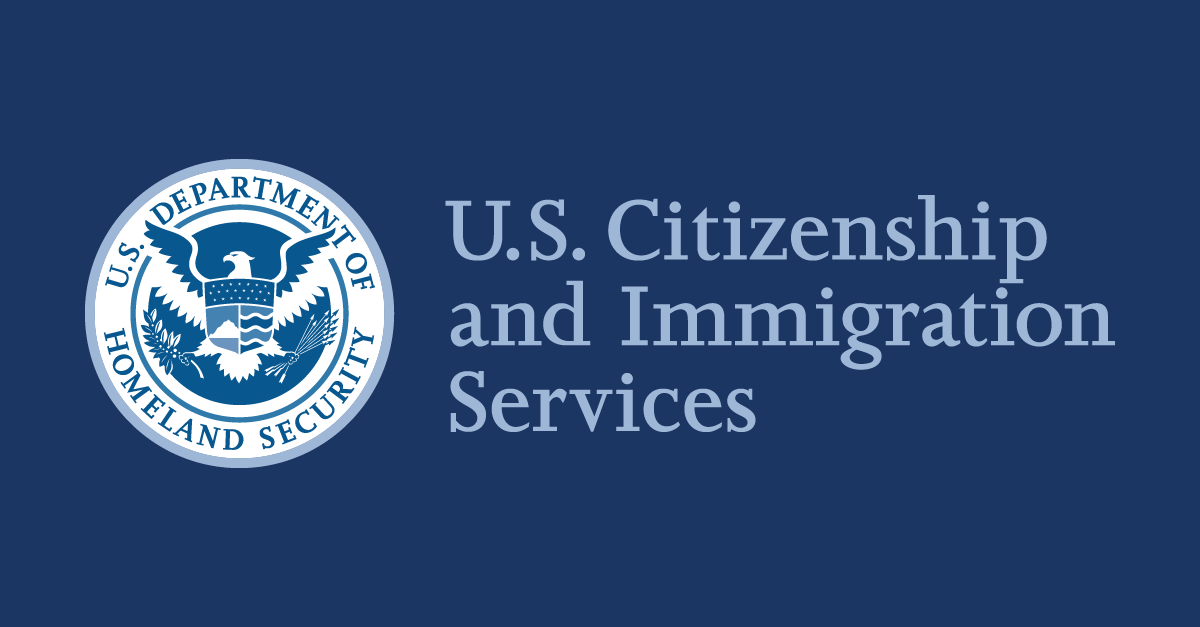Re: ВОССОЕДИНЕНИЕ СЕМЬИ -кто что знает??
Bringing Siblings to Live in the United States as Permanent Residents
Eligibility
In order to bring your sibling (brother or sister) to live in the United States as a permanent resident (green card holder), you must be a U.S. citizen and over 21 years of age. Note: Permanent residents may not bring siblings to live permanently in the United States.
Required Documentation
To successfully complete the process, the petitioner must submit:
Form I-130 (signed with proper fee)
Note: you do not need to file a separate Form I-130 for your sibling’s spouse or unmarried children under 21 years of age.
Evidence that you are a U.S. citizen:
A copy of your valid U.S. passport, OR
A copy of your U.S. birth certificate, OR
A copy of Consular Report of Birth Abroad, OR
A copy of your naturalization certificate, OR
A copy of your certificate of citizenship
A copy of your birth certificate and a copy of your sibling's birth certificate showing that you have at least one common parent
If you and your sibling have a common (biological) father but different mothers, please submit:
Copies of the marriage certificates of the father to each mother, AND
Copies of documents showing that any prior marriages of either your father or mothers were legally terminated.
If you and your sibling are related through adoption, please submit:
A copy of the adoption decree(s) showing that the adoption took place before you or your sibling (the adopted child) became 16 years old.
If you and your sibling are related through a step-parent, please submit:
Copies of documents showing that any prior marriage(s) of the natural parent and/or step-parent were legally terminated, AND
A copy of the marriage certificate of the step-parent to the natural parent (age restrictions for meeting definition of step-child apply)
Note: If your name or your sibling’s name has changed, please include proof of the legal name change (may include marriage certificate, divorce decree, adoption decree, court judgment of name change, etc.)
Case Status
To check the status of your visa petition, see the “My Case Status” link to the right.
Can my sibling come to the United States to live while the visa petition is pending?
There is no avenue for your sibling to enter the United States prior to immigration on the basis of a pending Form I-130. In most instances, the beneficiary of a pending or appoved immigrant visa will not be eligible for a nonimmigrant visa, although certain exceptions may apply.
For more information on “Adjustment of Status” within the United States and “Consular Processing” overseas, see the links to the right.
My Petition was Denied: Can I Appeal?
If the visa petition you filed is denied, the denial letter will tell you how to appeal and when you must file the appeal. After your appeal form and the required fee are processed, the appeal will be referred to the Board of Immigration Appeals. For more information, see the “How Do I Appeal the Denial of My Petition or Application?” link to the right.
Following-to-Join Benefits
This section is for beneficiaries who became permanent residents through a preference classification.
If you were married and/or had children who did not obtain permanent residence at the same time you did, they may be eligible for follow-to-join benefits. This means that you do not have to submit a separate Form I-130 for your spouse and/or children. In addition, your spouse and/or children will not have to wait any extra time for a visa number to become available. In this case, you may simply notify a U.S. consulate that you are a permanent resident so that your spouse and/or children can apply for an immigrant visa.
Your spouse and/or children may be eligible for following-to-join benefits if:
The relationship existed at the time you became a permanent resident and still exists, AND
You received an immigrant visa or adjusted status in a preference category
If your family member falls into this category and you adjusted to permanent residency in the United States, you may submit the following:
Form I-824, Application for Action on an Approved Application or Petition
A copy of the original application or petition that you used to apply for immigrant status
A copy of Form I-797, Notice of Action, for the original application or petition
A copy of your Form I-551 (green card)
If you are in the United States and have not yet filed to adjust your status to permanent resident, you can file Form I-824 for your spouse and/or child overseas with your Form I-485. When concurrently filing Form I-824, it does not require any supporting documentation.
If you received the immigrant visa overseas, you may contact the National Visa Center (NVC) for follow-to-join information. Send your inquiry by e-mail to [email protected] or by writing to the National Visa Center, ATTN: WC, 32 Rochester Ave., Portsmouth, NH 03801-2909.
To download the forms and instructions mentioned above, see links in the “Forms” section to the right.
Bringing Siblings to Live in the United States as Permanent Residents
Eligibility
In order to bring your sibling (brother or sister) to live in the United States as a permanent resident (green card holder), you must be a U.S. citizen and over 21 years of age. Note: Permanent residents may not bring siblings to live permanently in the United States.
Required Documentation
To successfully complete the process, the petitioner must submit:
Form I-130 (signed with proper fee)
Note: you do not need to file a separate Form I-130 for your sibling’s spouse or unmarried children under 21 years of age.
Evidence that you are a U.S. citizen:
A copy of your valid U.S. passport, OR
A copy of your U.S. birth certificate, OR
A copy of Consular Report of Birth Abroad, OR
A copy of your naturalization certificate, OR
A copy of your certificate of citizenship
A copy of your birth certificate and a copy of your sibling's birth certificate showing that you have at least one common parent
If you and your sibling have a common (biological) father but different mothers, please submit:
Copies of the marriage certificates of the father to each mother, AND
Copies of documents showing that any prior marriages of either your father or mothers were legally terminated.
If you and your sibling are related through adoption, please submit:
A copy of the adoption decree(s) showing that the adoption took place before you or your sibling (the adopted child) became 16 years old.
If you and your sibling are related through a step-parent, please submit:
Copies of documents showing that any prior marriage(s) of the natural parent and/or step-parent were legally terminated, AND
A copy of the marriage certificate of the step-parent to the natural parent (age restrictions for meeting definition of step-child apply)
Note: If your name or your sibling’s name has changed, please include proof of the legal name change (may include marriage certificate, divorce decree, adoption decree, court judgment of name change, etc.)
Case Status
To check the status of your visa petition, see the “My Case Status” link to the right.
Can my sibling come to the United States to live while the visa petition is pending?
There is no avenue for your sibling to enter the United States prior to immigration on the basis of a pending Form I-130. In most instances, the beneficiary of a pending or appoved immigrant visa will not be eligible for a nonimmigrant visa, although certain exceptions may apply.
For more information on “Adjustment of Status” within the United States and “Consular Processing” overseas, see the links to the right.
My Petition was Denied: Can I Appeal?
If the visa petition you filed is denied, the denial letter will tell you how to appeal and when you must file the appeal. After your appeal form and the required fee are processed, the appeal will be referred to the Board of Immigration Appeals. For more information, see the “How Do I Appeal the Denial of My Petition or Application?” link to the right.
Following-to-Join Benefits
This section is for beneficiaries who became permanent residents through a preference classification.
If you were married and/or had children who did not obtain permanent residence at the same time you did, they may be eligible for follow-to-join benefits. This means that you do not have to submit a separate Form I-130 for your spouse and/or children. In addition, your spouse and/or children will not have to wait any extra time for a visa number to become available. In this case, you may simply notify a U.S. consulate that you are a permanent resident so that your spouse and/or children can apply for an immigrant visa.
Your spouse and/or children may be eligible for following-to-join benefits if:
The relationship existed at the time you became a permanent resident and still exists, AND
You received an immigrant visa or adjusted status in a preference category
If your family member falls into this category and you adjusted to permanent residency in the United States, you may submit the following:
Form I-824, Application for Action on an Approved Application or Petition
A copy of the original application or petition that you used to apply for immigrant status
A copy of Form I-797, Notice of Action, for the original application or petition
A copy of your Form I-551 (green card)
If you are in the United States and have not yet filed to adjust your status to permanent resident, you can file Form I-824 for your spouse and/or child overseas with your Form I-485. When concurrently filing Form I-824, it does not require any supporting documentation.
If you received the immigrant visa overseas, you may contact the National Visa Center (NVC) for follow-to-join information. Send your inquiry by e-mail to [email protected] or by writing to the National Visa Center, ATTN: WC, 32 Rochester Ave., Portsmouth, NH 03801-2909.
To download the forms and instructions mentioned above, see links in the “Forms” section to the right.






Comment